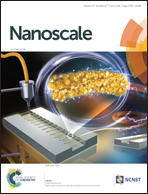Construction of dual-functional polymer nanomaterials with near-infrared fluorescence imaging and polymer prodrug by RAFT-mediated aqueous dispersion polymerization†
Abstract
The performance of functional polymer nanomaterials is a vigorously discussed topic in polymer science. We devoted ourselves to investigating polymer nanomaterials based on near-infrared (NIR) fluorescence imaging and polymer prodrug in this study. Aza-boron dipyrromethene (BODIPY) is an important organic dye, having characteristics such as environmental resistance, light resistance, high molar extinction coefficient, and fluorescence quantum yield. We incorporated it into our target monomer, which can be polymerized without changing its parent structure in a polar solvent and copolymerized with water-soluble monomer to improve the solubility of the dye in an aqueous solution. At the same time, the hydrophobic drug camptothecin (CPT) was designed as a prodrug monomer, and the polymeric nanoparticles (NPs) with NIR fluorescence imaging and prodrug were synthesized in situ in reversible addition–fragmentation chain transfer (RAFT)-mediated aqueous dispersion polymerization. The dynamic light scattering (DLS) and transmission electron microscopy (TEM) revealed the final uniform size of the dual-functional polymeric NPs morphology. The dual-functional polymeric NPs had a strong absorption and emission signal in the NIR region (>650 nm) based on the fluorescence tests. In consideration of the long-term biological toxicity, confocal laser scanning microscopy (CLSM) results indicated that the dual-functional NPs with controlled drug content exhibited effective capability of killing HeLa cells. In addition, in vivo imaging of the dual-functional NPs was observed in real time, and the fluorescent signals clearly demonstrated the dynamic process of prodrug transfer.



 Please wait while we load your content...
Please wait while we load your content...